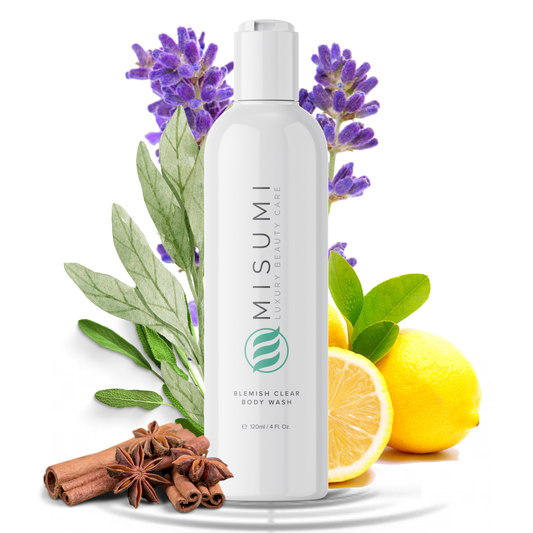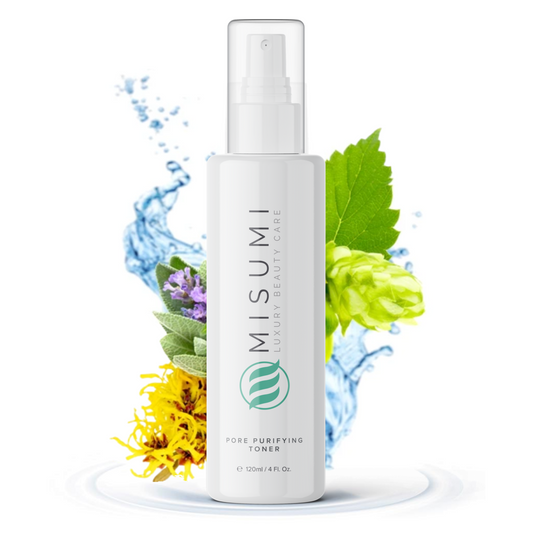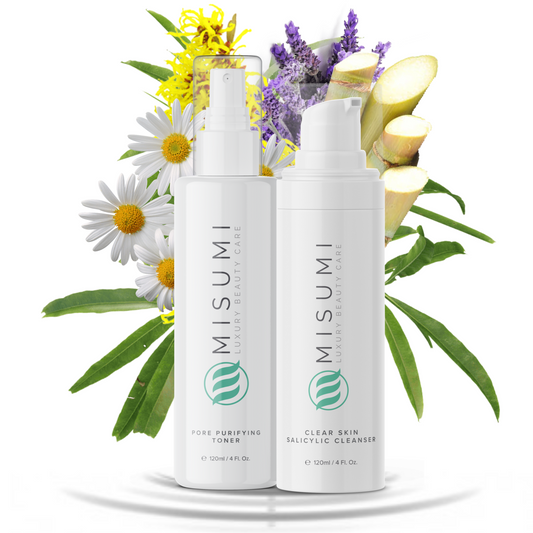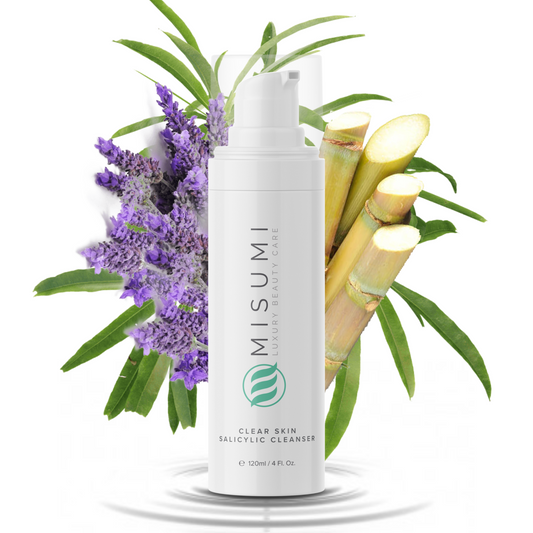In a perfect world, we'd all have silky-smooth, soft, and radiant skin. Unfortunately, in the world we live in, we're faced with air pollutants, endless bacteria, the constant physiological processes our body undergoes, and the stroke of luck we get from the gene pool we're made of.
So, it's understandable how difficult it can be to achieve, let alone maintain, flawless skin.

One of the most annoying things standing in the way of heavenly skin is comedogenic acne, or as you might know them, blackheads and whiteheads.
Blackheads and whiteheads are the mildest forms of acne but the most annoying ones. No matter how well you care for your skin, they're still there. You might have tried squeezing them, getting a facial, or using pore strips, special creams, and masks, but to no avail.
But hope isn't lost! Natural home remedies might help you get rid of comedogenic acne for good. Keep reading to find out exactly how and what works best as a home remedy for blackheads and whiteheads.
Defining Blackheads and Whiteheads

Our skin loves oil and needs its moisture to function properly. This is why we have sebaceous glands in the skin. These small glands secrete an oily substance (known as sebum) into the hair follicles, which lubricate and moisturize the skin.
This is all great and perfectly normal until the oil, hair, dirt, debris, and dead skin cells plug your skin pores. Once this happens, the plug hardens into small bumps that look like white or black dots.
Both blackheads and whiteheads are called comedones.
A blackhead is a plug of sebum, debris, and dirt that's trapped in a hair follicle. This is an open pore, otherwise known as "open comedones." The plug is dark because it undergoes an oxidation process.
A whitehead is also a plug of sebum, debris, and dirt trapped in a hair follicle. Here, the pore is closed. Unlike blackheads, which can sometimes be pushed outside the pore, whiteheads are comedones with a thin layer of skin above them and appear as a raised white bump. They're also known as "closed comedones."
Comedones are the most basic type of acne and are typically mild and painless. Problems occur when bacteria get involved. The clogged pore offers a perfect environment for skin bacteria skin to start growing. The overgrowth of bacteria triggers a reaction in the immune system, leading to inflammation, redness, pain, and more severe acne.
This highlights the importance of regular exfoliation to keep your complexion clear and clean, especially if you have acne-prone skin. Among the variety of beauty products on the market, natural home remedies have a well-deserved reputation against pesky blackheads and whiteheads.
Here's why.
Why Choose Home Remedies for Blackheads and Whiteheads?

There are several reasons why people turn to natural home remedies for skin ailments.
First of all, home remedies are "natural," which appeals to most people. However, it's important to note that most cosmetic chemicals (such as salicylic acid, lactic acid, and benzoyl peroxide) are also technically natural. Cosmetic products are processed when active ingredients are isolated, combined, and blended for a specific problem. This is why they are sometimes too harsh or unsuitable for sensitive skin. Home remedies can offer a milder approach, with you being in charge of what ingredients you put on your skin - from cinnamon powder to tea tree oil.
The second and probably the most common reason for using home remedies to remove blackheads is that they are practical and cheap, making them easily accessible to everyone. Most of the stuff you'll need can be found in your fridge, and you can buy anything else in your local supermarket for a low price.
Third, natural remedies are powerful, and many people swear by them. While anecdotal evidence has been piling up over the years, scientific research also supports many natural ingredients.
What Should You Expect?

If you know your skin type and cater to it, you'll most likely see your skin improve. But it takes patience, effort, consistency, and, most of all, realistic expectations to help eliminate blackheads for good.
Over time, you'll see improved skin texture and tone, clearer skin, and a more healthy, glowing look overall. However, don't consider these natural remedies a magical fix that will change your skin in a couple of days or weeks. That's impossible, no matter what product you're using. You may feel frustrated and be tempted to pop blackheads - but don't! This can lead to more blackheads and worsen existing skin conditions.
You'll get the best results if you regularly use home remedies in your skincare routine to fight blackheads, combined with skincare products that work well on your skin type.
It's also important to note that some natural ingredients are comedogenic and can clog pores, such as coconut oil. But rest assured! All our recommended home remedies are suitable for oily skin and great at removing blackheads.
The Best Home Remedies for Blackheads and Whiteheads

Lemon Juice
Lemon juice is a great way to treat blackheads. It's highly acidic and can dry out and shrink the pores. This is good news for people with oily skin since it will soak up the excess oil from their skin's surface and prevent pores from clogging. Furthermore, tightening the skin and shrinking the pores can prevent oil and debris buildup, which leaves no room for the development of blackheads.
Additionally, lemon is antibacterial, meaning it can reduce skin inflammation and treat acne.
However, lemon may have powerful effects on the skin, but it also comes with several side effects. This ingredient is not recommended for people with dry and sensitive skin because of its highly acidic nature, which can cause irritation and redness.
If you still want to reap the benefits, you can use it in small amounts as part of a blend with other gentler ingredients.
If you use it directly on the skin, apply it as a spot treatment rather than spreading it over the whole face. It can easily dry out your pores and trigger the skin's oil production to go into overdrive, producing a counter effect. To prevent this, always use a lightweight moisturizer after treating your skin with lemon. Look out for non-comedogenic moisturizers, such as the Wrinkle-Free All Day Moisturizer.
Apple Cider Vinegar

Apple cider vinegar is another strong acidic remedy to remove blackheads. It has similar effects to lemon, boasting antibacterial, anti-inflammatory, and antimicrobial properties. It's considered an astringent, and it can also dry out and shrink the pores. Apple cider vinegar can also balance the skin's pH levels and remove dead skin cells, helping clear your skin.
The best way to use apple cider vinegar is by diluting it with water and applying it directly with a cotton pad. Mix two tablespoons of apple cider vinegar with eight ounces of lukewarm water and gently apply to the affected areas of the face. Let the substance act for about 20 minutes, then wash it off.
As with lemon, the same precautions apply. If you have dry or sensitive skin, it's better to use our alternatives for blackhead removal, as they might be more suitable for you.
Always use a moisturizer to finish. You don't want to dry the skin too much and cause adverse effects, such as producing more oil.
Baking Soda

Baking soda has an alkaline nature. When it comes into contact with acids, it produces a reaction that alters the skin's pH levels. By altering the acid mantle of the skin, baking soda prevents the natural secretion of oils.
If your skin is too acidic and often feels inflamed, red, or irritated, baking soda can help. It will shrink the pores, soak up excess oil, reduce inflammation, and, of course, remove blackheads. In fact, it's a common ingredient in many natural homemade recipes for pimples, blackheads, and whiteheads.
To use baking soda on your skin, mix equal amounts of the ingredient with water. You'll get a smooth paste, which you can gently apply and massage onto a clean face. After 5-10 minutes, wash it off with lukewarm water.
Tea Tree Oil

Tea tree oil is a famous ingredient present in many skincare products. As one of the most popular natural remedies available, it's most commonly used to get rid of blackheads, inflamed pimples, and even acne vulgaris. It's a highly anti-inflammatory and antimicrobial ingredient.
You can buy pure tea tree oil extract in almost any drug store or online. Use this essential oil directly on the affected areas of the skin. If this is too strong, you can always dilute it by blending it with other remedies.
Jojoba oil makes a good combo with tea tree oil. You can mix both oils and use them directly on your face. Leave the blend for about 10 minutes and then rinse off.
Aloe Vera

This powerful natural remedy soothes the skin and cleanses the pores. It has antioxidant and antibacterial properties, which will help prevent blackheads and whiteheads. Its antioxidant ability will reduce damage and ensure the pores stay healthy and clean, while its antibacterial properties will keep bacteria away from your pores.
Additionally, aloe vera promotes the absorption of skincare products, which means you can use it before applying a more specific product. Combine this ingredient with other remedies or apply pure aloe vera gel directly on the skin. The best part is you can extract the gel yourself if you have an aloe vera plant in your home.
Some of the most famous home remedies with aloe vera are blends with lemon, honey, tea tree oil, and turmeric. Check our article on aloe vera for acne, where you can find a lot of recipes combining it with other beneficial substances.
Avocado Paste

Avocados are amazing moisturizers because of their high content of fatty acids. They're loaded with Omega-3 fatty acids, iron, calcium, potassium, copper, magnesium, and vitamins A, E, B, and K. What more can you ask for?
Omega-3 fatty acids can improve acne lesions and comedogenic acne because of their anti-inflammatory properties. So, if you have sensitive or dry skin and can't use lemon or apple cider vinegar, avocados are for you.
They also contain a protein called sterolins. This protein helps whiten the skin and reduces the appearance of blackheads and whiteheads.
You can make a powerful facial mask by mixing banana peels with avocados. Bananas are filled with antioxidants and vitamins that are good for the skin. Prepare the avocado by cutting it in half, scraping it off from the peel, and blending it with a banana peel. After you get a paste-like consistency, gently apply it on a clean face and let it sit for approximately 15 minutes. After this, wash your face with cool water.
Honey

Honey is naturally antibacterial, which means it will prevent acne-causing bacteria from invading your pores. It's full of antioxidants and helps scavenge free radicals. It's extremely moisturizing and soothing, giving you glowing skin without the grease. Its sticky consistency will help the mixture stay on the skin for some time, allowing all the nutrients to absorb into the skin.
So, how can you use honey to remove blackheads and whiteheads?
Strawberry, Honey, and Lemon Juice Mixture
In a small bowl, add two strawberries, two teaspoons of honey, and ½ teaspoon of lemon juice. Grind the ingredients until you get a smooth paste. Apply this paste to your skin and leave it for 15-20 minutes. After this, you can wash your face with lukewarm water.
Strawberries can also help reduce blackheads and whiteheads by cleansing blocked pores.
Witch Hazel

Witch hazel, like tea tree oil, is a popular ingredient in skincare cosmetics, many of which are designed to target comedones. It's a famous remedy because it contains astringents that cause the cells to shrink, reducing the possibility of oil and debris buildup.
Witch hazel can also help control the oil production on the skin and reduce inflammation.
You can buy pure witch hazel extract and use it to make DIY face packs or add a couple of drops to your skincare products.
If you're using witch hazel as a pure extract directly on the skin, keep in mind that it's highly potent and can cause irritation and dryness. For a gentler remedy, mix it with chamomile.
In a small container, add some chamomile herbs and pour witch hazel over them. Store the container in a cool and dry place for two weeks. Shake it every day, and check if it needs more witch hazel. After two weeks, your tonic is ready to use. You should strain the liquid and use it any time you feel the need.
Rosewater

Anecdotal evidence has shown that rose water is effective as a home remedy against whiteheads and blackheads. This is likely because rosewater balances the skin's pH and can improve blood circulation. It also helps open the pores and unclog them.
To use rosewater as a home remedy, mix it with almonds.
In a blender, grind almonds into a powder, and slowly add rose water until you get a thick paste. Apply the paste on the face and leave for about 20 minutes. Then, wash it off with lukewarm water.
Turmeric

Turmeric has it all. Yep, that's right - it's packed with antimicrobial, antibacterial, antifungal, and anti-inflammatory properties. This amazing healing agent successfully battles redness, itchiness, hyperpigmentation, pimples, and comedones. Turmeric also contains fatty acids, vital vitamins, and minerals. It's also a natural exfoliator that will help get rid of blackheads and also clean your skin, making it great for double cleansing.
Turmeric and Mint Juice
One way to use turmeric is to mix one tbsp of it with two tbsp of mint juice. Stir well until you get a homogeneous mixture. Apply the tonic on your face with a cotton strip or ball and let it dry for 10-15 minutes. After, wash your face with lukewarm water.
Green Tea

Green tea is loaded with polyphenols – antioxidants that help protect the skin from free radicals. Along with other polyphenolic components, they also help lower inflammation in the body, which is one of the main causes of pimples.
Additionally, green tea help balances the hormones in the body, which can bring you relief from annoying breakouts during menstruation.
So, adding a green tea mask to your skincare routine a couple of times a week can help you control and reduce blackheads and whiteheads on the face.
You can choose the simple option and make yourself a home remedy from green tea alone. Mix a tablespoon of dry green tea leaves with a few drops of water to create a paste. Gently apply the paste on your face and leave it on for 20 minutes.
You can also mix green tea with honey, turmeric, or baking soda.
Egg Whites

Egg whites are popular for removing black and whiteheads. This is due to albumin, the key ingredient responsible for its pore-tightening property. They can help remove current black and whiteheads and prevent new ones from breaking out.
Because egg white masks can leave your skin tight and dry, it's best to mix it up with honey. The antibacterial properties of honey will clear pores and kill any bacteria present.
To make this mask, you'll need one egg white and one teaspoon of honey. All you have to do is stir well until the ingredients blend. After this, apply the mask to your face and leave it to dry.
Activated Charcoal

Charcoal is a wonderful ingredient that attracts the toxins trapped in our skin. A charcoal mask will attract and bind with the impurities inside your pores, so when you pull the dry mask off, the dirt and debris will get out of the skin's surface too. Just be careful; it can dry out the skin if used too often. Use it once or twice a week, and always apply a moisturizer afterward.
Mix 1/2 teaspoon of activated charcoal powder, one teaspoon of green clay, and 1/2 teaspoon of warm water. Stir well until you get a smooth consistency. You can use a makeup applicator, a sponge, or a brush to apply the blend evenly on your face. Avoid the area around the eyes. Let the mask dry completely, and then wash your face with cool water.
Sugar Scrub

One popular method for removing black and whiteheads is by scrubbing your skin with natural ingredients. And, of course, the most frequently mentioned is brown sugar. This process can be a powerful exfoliating tool, opening your pores and letting the active ingredients feed the skin. It'll also get rid of dead skin cells, leaving you with a smoother complexion.
But is it safe? Well, it depends on how you do it. We don't recommend this natural exfoliant for sensitive or problematic skin. The sugar is rough, and the rubbing can cause redness, irritation, and aggravate the comedones even more.
So, even if you think your skin can handle it, be very gentle.
Here's one great sugar scrub recipe to remove dead cells, prevent blackheads and keep your skin clean.
You'll need two tablespoons of oatmeal, one tablespoon of granulated brown sugar, 1/2 tablespoon of honey, and a few drops of freshly squeezed lemon. Mix all the ingredients and gently scrub your face with the mixture for 5-7 minutes. Let it sit on the skin for another 5 minutes and wash off with lukewarm water. Your skin should feel very soft and smooth.
Final Thoughts
Our bodies are not perfect at handling all the things that are happening on the inside, as well as the outside. Sometimes, the stress, hormonal changes, genetics, lifestyle choices, harsh climate, and pollutants and bacteria in the air can become too much for the skin to handle, and we get breakouts.
The good thing is that blackheads and whiteheads are the most basic form of acne, and they're painless and less visible than inflamed or cystic pimples. The bad thing about them is they're probably the most annoying acne lesions and are hard to eliminate.
If you're looking to remove blackheads, combining medicinal and cosmetic products like AHAs, BHA, benzoyl peroxide, or retinoids with natural home remedies might do the trick.
Just don't overdo it. Be patient, be consistent, and take your time to learn what works best for different skin types.
References
Antioxidant and anti-ageing activities of citrus-based juice mixture
Honey in dermatology and skin care: a review
A review of applications of tea tree oil in dermatology
Melaleuca alternifolia (Tea Tree) Oil: a Review of Antimicrobial and Other Medicinal Properties









